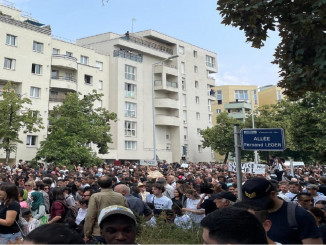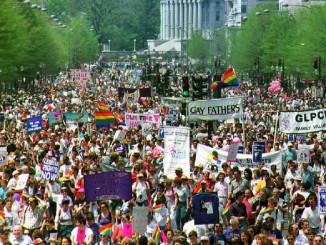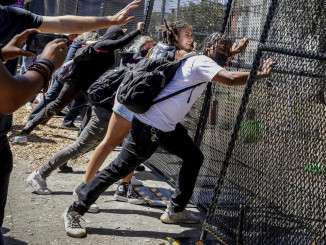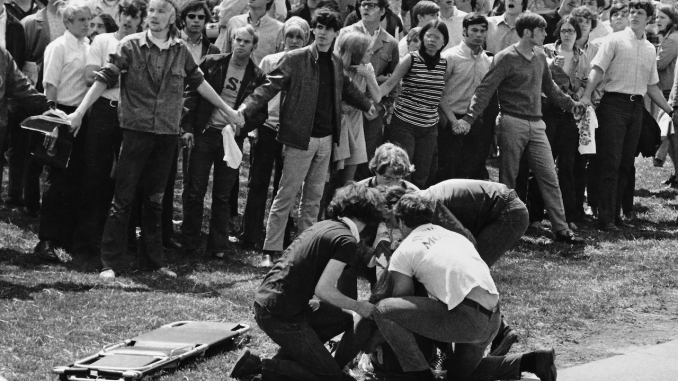
As university presidents, their capitalist Boards of Directors and politicians call in local police, state troopers and national guards to attempt to crush student protests against the genocide in Gaza, we are reminded that those same forces have a long history of violently repressing student voices. One of the worst examples of this occurred on May 4, 1970, at Kent State University in northeastern Ohio.
For more than five years, protests against the Vietnam War had raged in the United States, both on college campuses and in the streets. At the 1968 Democratic National Convention, Chicago Police brutally attacked hundreds of protesters, turning peaceful rallies and marches into bloody melees. Schools like Columbia University, the University of California, Berkeley, and others had seen thousands sitting down, occupying buildings and protesting, while cops arrested and beat hundreds.
At Kent State, in Kent, Ohio, students had also been active since at least 1968. Organized chapters of Students for a Democratic Society (SDS) and Black United Students (BUS) had at least dozens of members and both had fought for years to end discrimination on and around the campus, while also protesting the war as U.S. involvement intensified and the nationwide anti-war movement developed. These groups and individual protests and anti-war campaigns simmered throughout the late ’60s into 1970.
So when Richard Nixon publicly announced on April 30, 1970 that U.S. troops had entered Cambodia, expanding the war in southeast Asia that he had previously said he would end, tens of thousands quickly flooded streets and campuses to show their outrage at the escalation. At Kent State, a protest of about 500 took place on May 1. On May 2, the Reserve Officer Training Corps (ROTC) building on the campus was set on fire and mostly destroyed, and arrests were made at protests that occurred as fire fighters tried to put out the fire. The next day, Ohio Governor Jim Rhodes declared martial law, readying the National Guard already in Kent for action. Rhodes had already used the Guard more than any other Ohio governor, and, in a briefing with Guard commanders, he encouraged them to use violence freely by calling protesters and activists “worse than the brown shirts and the communist element,” and saying they had to “eradicate the problem.” This set the tone for violence.
The next day, May 4, at least 1,000 protesters rallied on the campus, demanding what they had been demanding for months and years: an end to the cruel and seemingly endless war of destruction against Vietnam and its people.
This time, the National Guard was ordered to disperse the crowd, and their officers, with the Governor’s approval, were prepared to use any means necessary. At about noon, only partially heard warnings to disperse were given, and when they were not followed, the National Guard fired tear gas, advanced toward the crowd of protesters, and then fired more tear gas. The crowd moved to avoid the tear gas, broke into separate groups, but continued their attempt to protest. Some protesters threw rocks at the National Guard, and more tear gas was fired. Many students, on their way to and from normal classes, watched the spectacle, some beginning to become engaged in the protests.
In this chaotic situation, after approximately 25 minutes, the first shot was fired, and a line of National Guard members opened fire. More than 20 Guard members fired for approximately 13 seconds, shooting 67 rounds of ammunition. About 100 yards away, students began to fall. Four were killed and nine others were wounded, including one who was paralyzed by a gunshot wound to the spine. Despite their attempts to protest and to resist their orders to disperse, none had been a threat to the Guard troops.
The moving photo of a dead protester and a crying student, and the Croby, Stills, Nash and Young song, Ohio, immortalized the event for decades to come. It shocked many, turning public opinion even further against the war.
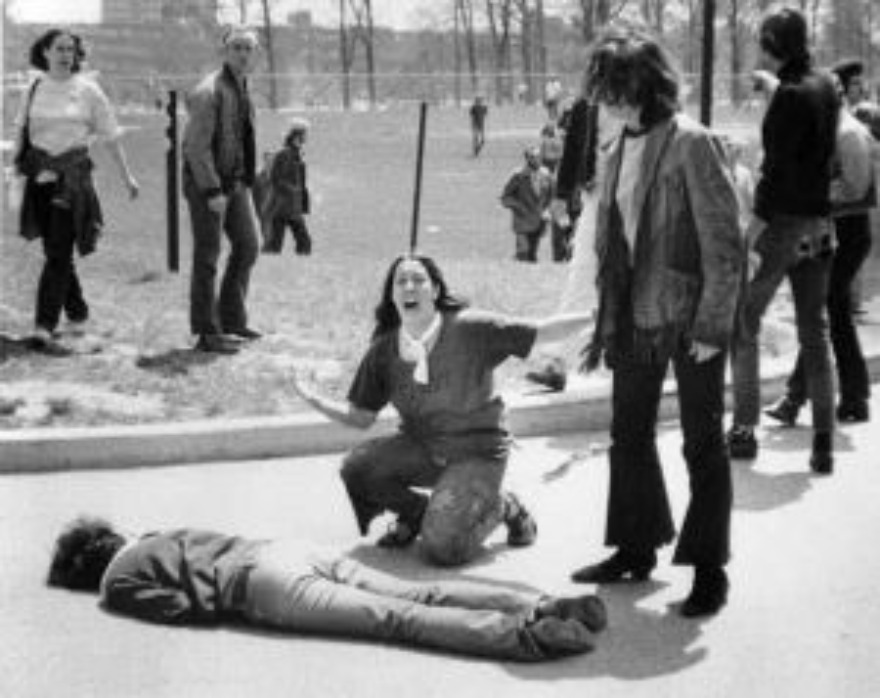
The shooting also became emblematic of government repression of dissent, no matter how peaceful or how righteous protesters might be. It showed the potential for violence by a capitalist state with armed troops at its disposal. Just nine days after the Kent State shooting two more students were killed by police at Jackson State University in Mississippi. At earlier protests, such as the Century City protests in 1967 Los Angeles, the Whitehall Street protests in 1967 New York City, and the protests at the 1968 Democratic National Convention, anti-war protests had already been met with extreme violence by the police.
Today, in May of 2024, as we watch local and state police around the nation arrest and brutalize people protesting the Israeli genocide in Gaza, it is easy to be shocked by the images. Why, we think to ourselves, are police attacking students for peacefully protesting an injustice? Why are the police heavily armed and in riot gear while students are not? Why are politicians and university presidents and their boards allowing this to happen, and even encouraging it?
The killing and wounding of the students at Kent State reminds us that the government always represses us when we question it or try to stop it from carrying out its goals. This happens in workplaces, in the streets, and in schools and universities, which are in reality designed to shape us to accept and work within the system, not actually change it. It has happened historically and it is still happening today as young people say no to the Israeli genocide of the Palestinian population.
Because the capitalist government is so willing to use violence to repress us, in order to challenge this system we’ll need to be organized and ready. Because if we push hard enough, the state, the capitalists, and yes, their minions at universities, will react with force. Our power is in our numbers, in spreading our movement to the largest number of people, and exposing the system for what it is – the rule of the few over the many, to preserve and extend their power and privilege.
For a visual introduction to the event, see this short video which gives a chronology of events. For primary sources and other resources on the shooting, see this Kent State website archive.https://www.npr.org/2010/05/03/126423778/shots-still-reverberate-for-survivors-of-kent-state


